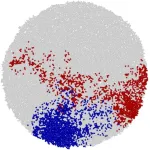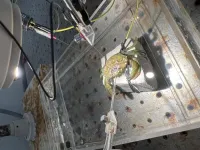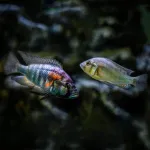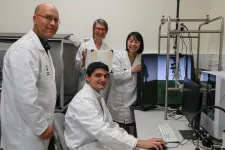(Press-News.org) RICHLAND, Wash. —Tip the first tile in a line of dominoes and you’ll set off a chain reaction, one tile falling after another. Cross a tipping point in the climate system and, similarly, you might spark a cascading set of consequences like hastened warming, rising sea levels and increasingly extreme weather.
It turns out there’s more to weigh than catastrophic environmental change as tipping points draw near, though. Another point to consider, a new study reveals, is the cost of undoing the damage.
The cost of reversing the effects of climate change—restoring melted polar sea ice, for example—quickly climbs nearly fourfold soon after a tipping point is crossed, according to new work published today in the journal npj Climate and Atmospheric Science. Much work has been done to explore the environmental costs tied to climate change. But this new study marks the first time researchers have quantified the costs of controlling tipping points before and after they unfold.
Common examples of Earth’s tipping points include melting ice sheets and dwindling tropical coral reefs. As ice melts and reefs die off, drastic environmental effects like flooded coastal cities and lost biodiversity soon follow—a shared trait among what the Intergovernmental Panel on Climate Change defines as “critical thresholds in a system that, when exceeded, can lead to a significant change in the state of the system.”
Despite the well-established dangers of crossing a tipping point, little is known about the cost of controlling them. How much effort would it take to stop and reverse course just before crossing a tipping point?
In the case of polar sea ice, which is melting at a pace unrivaled by any period in the past 1,500 years, a reversal would entail halting melt and reestablishing ice cover. But how about after we tip—how might the cost of intervention change if we wait?
Cross a tipping point threshold, said mathematician and lead author Parvathi Kooloth, and it costs nearly four times the effort to reverse the effects and reestablish the climate system to where it was just before tipping, as opposed to reversing course before the threshold. The message applies to most tipping points, said Kooloth, whether they involve tropical coral reefs or frigid sea ice.
“You either shoulder the cost now, just before the threshold is crossed,” said Kooloth, “or you wait. And if you wait, the degree of intervention needed to bring the climate system back to where it was rises steeply. A key insight from this work is the confirmation that corrective action after the fact is much more costly and intrusive than preventive action.”
Each tipping point is unique. The physical qualities that determine its behavior—the extent of cloud cover or, say, the transport of heat in the nearest ocean waters—determine how post-tipping changes take shape in the climate system. In turn, those qualities dictate the nuts and bolts of an actual intervention strategy.
At the heart of each tipping point, however, is a shared, core equation that describes its basic nature. This universality allows researchers like Kooloth to probe the fundamental, shared behavior of tipping points using simplified mathematical models.
From their findings, scientists can then glean broad stroke details that could inform future intervention plans and perhaps, as Kooloth hopes, even a way to identify early warning signals that a tipping point is drawing near.
“It’s actually really hard to pin a tipping point down,” said Kooloth. “We know a great deal about the climate system today. But even now we’re never really sure how far or close we are to a tipping point. Could we one day use observable precursors to provide early warning? My hope is that we can.”
The team behind the new study uncovered one other interesting phenomenon: that some tipping points have an “overshoot window.” In this window of time just after a tipping point is crossed, the cost of intervention doesn’t start its steep climb right away. Instead, cost only grows linearly with time. This can happen because nearby ocean waters take longer to heat up, for example, delaying the onset of rapid change.
It’s a fortunate thing, Kooloth points out, a gift of additional time before dire changes start piling on. But this is “no free lunch,” she adds. The extra leeway comes with an even steeper increase in intervention costs once the overshoot window is fully crossed. The bigger the overshoot window, the mightier the cost.
The authors point out that not all effects of climate change are reversible, like flora and fauna lost to rapid and prolonged environmental change. And some effects could demand a great deal of effort to reverse—even more than the effort it took to push the climate system past a tipping point.
There is an asymmetry at play, said Kooloth. We could approach and pass a tipping point rather quickly, but the journey to revert the climate system to where it was could take much, much longer.
“The path forward and the path backward are often not the same,” said Kooloth. “Imagine that we go down a high-emissions pathway, where the planet warms enough to melt all our sea ice by the end of the century. If we arrive in the year 2100 with no sea ice, it may not be sufficient to bring the ice back if we dialed our emissions down to the levels we’re emitting now in 2024, when we still have some ice left. We may need to dial emissions down much further, to levels predating 2024—that asymmetry is important for us to consider as we choose our path forward.”
This work, “How Optimal Control of Polar Sea-ice Depends on its Tipping Points,” was supported by the Department of Energy’s Office of Science. In addition to Kooloth, other Pacific Northwest National Laboratory coauthors include Jian Lu, Craig Bakker, and Adam Rupe. Derek DeSantis of Los Alamos National Laboratory is also a coauthor.
END
Delay and pay: Tipping point costs quadruple after waiting
Reversing climate change grows more costly the longer you wait, with costs quickly quadrupling immediately after tipping points are crossed
2024-11-26
ELSE PRESS RELEASES FROM THIS DATE:
Magnetic tornado is stirring up the haze at Jupiter's poles
2024-11-26
While Jupiter's Great Red Spot has been a constant feature of the planet for centuries, University of California, Berkeley, astronomers have discovered equally large spots at the planet's north and south poles that appear and disappear seemingly at random.
The Earth-size ovals, which are visible only at ultraviolet wavelengths, are embedded in layers of stratospheric haze that cap the planet's poles. The dark ovals, when seen, are almost always located just below the bright auroral zones at each ...
Cancers grow uniformly throughout their mass
2024-11-26
Researchers at the University of Cologne and the Centre for Genomic Regulation (CRG) in Barcelona have discovered that cancer grows uniformly throughout its mass, rather than at the outer edges. The work, published today in the journal eLIFE, challenges decades-old assumptions about how the disease grows and spreads.
“We challenge the idea that a tumour is a ‘two-speed’ entity with rapidly dividing cells on the surface and slower activity in the core. Instead, we show they are uniformly growing masses, where every region is equally active and has the potential ...
Researchers show complex relationship between Arctic warming and Arctic dust
2024-11-26
The Arctic is warming two to four times faster than the global average. A recent study by researchers in Japan found that dust from snow- and ice-free areas of the Arctic may be an important contributor to climate change in the region. The findings were published in the journal npj Climate and Atmospheric Science.
According to one view, higher temperatures in the Arctic are thought to lead to the region's clouds containing more liquid droplets and fewer ice crystals. Clouds become thicker, longer lasting, ...
Brain test shows that crabs process pain
2024-11-26
Researchers from the University of Gothenburg are the first to prove that painful stimuli are sent to the brain of shore crabs providing more evidence for pain in crustaceans. EEG style measurements show clear neural reactions in the crustacean's brain during mechanical or chemical stimulation.
In the search for a better welfare of animals that we humans kill for food, researchers at the University of Gothenburg have chosen to focus on decapod crustaceans. This includes shellfish delicacies such as prawns, lobsters, crabs and crayfish that we both catch wild and farm. Currently, ...
Social fish with low status are so stressed out it impacts their brains
2024-11-26
Social stress is bad for your brain. It’s a prime suspect in the accumulation of oxidative stress in the brain, which is believed to contribute to mental health and neurodegenerative disorders — but the mechanisms that turn social stress into oxidative stress, and how social status affects this, are poorly understood. By studying a highly social, very hierarchical fish species, cichlids, scientists have now found that social stress raises oxidative stress in the brains of low-status fish.
“We found that low rank was generally linked to higher levels of oxidative stress in the brain,” said Dr Peter Dijkstra of ...
Predicting the weather: New meteorology estimation method aids building efficiency
2024-11-26
Due to the growing reality of global warming and climate change, there is increasing uncertainty around meteorological conditions used in energy assessments of buildings. Existing methods for generating meteorological data do not adequately handle the interdependence of meteorological elements, such as solar radiation, air temperature, and absolute humidity, which are important for calculating energy usage and efficiency.
To address this challenge, a research team at Osaka Metropolitan University’s Graduate School of Human Life and Ecology—comprising Associate ...
Inside the ‘swat team’ – how insects react to virtual reality gaming
2024-11-26
Humans get a real buzz from the virtual world of gaming and augmented reality but now scientists have trialled the use of these new-age technologies on small animals, to test the reactions of tiny hoverflies and even crabs.
In a bid to comprehend the aerodynamic powers of flying insects and other little-understood animal behaviours, the Flinders University-led study is gaining new perspectives on how invertebrates respond to, interact with and navigate virtual ‘worlds’ created by advanced entertainment technology.
Published in the ...
Oil spill still contaminating sensitive Mauritius mangroves three years on
2024-11-26
Three years after bulk carrier MV Wakashio ran aground on a coral reef off Mauritius, spilling 1000 tonnes of a new type of marine fuel oil, Curtin University-led research has confirmed the oil is still present in an environmentally sensitive mangrove forest close to important Ramsar conservation sites.
Lead researcher Dr Alan Scarlett, from Curtin’s WA Organic and Isotope Geochemistry Centre in the School of Earth and Planetary Sciences, said the chemical ‘fingerprint’ of the oil found ...
Unmasking the voices of experience in healthcare studies
2024-11-26
Researchers are calling for a formal process that recognises and acknowledges the invaluable contributions of those with lived experience in healthcare research.
New research by Flinders University published in the Patient Education and Counselling journal exposes underlying issues in academic engagement and calls for better processes to credit those with lived experiences.
“With the growing awareness of the importance of diversity and inclusion in research, it is time for the research community to monitor not only how often, but also how well people with lived experience are involved,” says Associate Professor Elizabeth Lynch.
Associate Professor Lynch from the College of ...
Pandemic raised food, housing insecurity in Oregon despite surge in spending
2024-11-26
Despite a heavy infusion of public and private support during the COVID-19 pandemic, Medicaid and Medicare beneficiaries in Oregon reported that housing and food insecurity shot up during the onset of the pandemic in March of 2020 — and their basic needs remained in doubt through at least the end of the following year.
The survey data were reported in a study led by Oregon Health & Science University and published today in the Annals of Family Medicine.
The Oregon study provides a state-specific dimension to a nationwide survey ...
LAST 30 PRESS RELEASES:
The (metabolic) cost of life
CFRI special issue call for papers: New Frontiers in Sustainable Finance
HKU Engineering scholar demonstrates the smallest all-printed infrared photodetectors to date
Precision empowerment for brain "eavesdropping": CAS team develops triple-electrode integrated functional electrode for simultaneous monitoring of neural signals and chemical transmitters during sleep
Single-capillary endothelial dysfunction resolved by optoacoustic mesoscopy
HKU three research projects named among ‘Top 10 Innovation & Technology News in Hong Kong 2025’ showcasing excellence in research and technology transfer
NLRSeek: A reannotation-based pipeline for mining missing NLR genes in sequenced genomes
A strand and whole genome duplication–aware collinear gene identification tool
Light storage in light cages: A revolutionary approach to on-chip quantum memories
Point spread function decoupling in computational fluorescence microscopy
BacPhase: Long-insert paired-end sequencing for bin marker construction and genome phasing
GmWOX1 regulates the mediolateral polarity of compound leaves in soybean
ChargeFabrica: An open-source simulation tool that aims to accelerate search for high performance perovskite solar cells
High levels of ADAR overexpression induce abundant and stochastic off-target RNA editing in rice protoplasts
On-demand upgraded recycling of polyethylene and construction of sustainable multifunctional materials based on the "LEGO" strategy
New "Stomata in-sight" system allows scientists to watch plants breathe in real-time
Anorexia nervosa may result in long-term skeletal muscle impairment
Narrative-based performance reviews deemed fairest by employees
New insights reveal how advanced oxidation can tackle emerging water pollutants
New review shows how biomass can deliver low-carbon gaseous fuels at scale
Climate change is quietly rewriting the world’s nitrogen cycle, with high stakes for food and the environment
Study finds SGLT-2 inhibitors linked to lower risk of diabetic foot nerve damage
Microbes may hold the key to brain evolution
Study examines how the last two respiratory pandemics rapidly spread through cities
Gender stereotypes reflect the division of labor between women and men across nations
Orthopedics can play critical role in identifying intimate partner violence
Worms as particle sweepers
Second spider-parasitic mite described in Brazil
January 2026 issues of APA journals feature new research on autism, pediatric anxiety, psychedelic therapy, suicide prevention and more
Private equity acquired more than 500 autism centers over the past decade, new study shows
[Press-News.org] Delay and pay: Tipping point costs quadruple after waitingReversing climate change grows more costly the longer you wait, with costs quickly quadrupling immediately after tipping points are crossed






